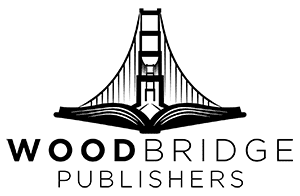Editing a book is no small feat. Between catching grammatical errors, refining your style, and ensuring the overall flow of the narrative, it can be overwhelming. Luckily, several fantastic book editing tools are available that can help streamline the process, saving you both time and effort. Let’s dive into some must-try book editing tools that every writer should consider.
1. Grammarly
What It Does
Grammarly is a comprehensive writing assistant that checks for more than just spelling and grammar errors. It analyzes your writing for style, tone, and clarity, offering suggestions to enhance readability.
Why You’ll Love It
Grammarly’s intuitive interface provides real-time feedback, which is incredibly useful for catching mistakes as you write. It offers explanations for its suggestions, helping you learn and improve your writing skills. Plus, its browser extension and app integrations make it versatile for all types of writing tasks.
Best For
Writers are looking for a robust tool to catch common mistakes and improve their overall writing style. It’s especially helpful for those who want to polish their grammar and ensure professional-quality writing.
2. Hemingway Editor
What It Does
Hemingway Editor focuses on making your writing bold and clear. It highlights complex sentences, passive voice, and adverbs, encouraging you to simplify your prose.
Why You’ll Love It
This tool is perfect for writers who tend to over-complicate their sentences. Hemingway provides a readability score, which helps you gauge how easy your text is to understand. Highlighting dense sections pushes you to create more concise and impactful writing.
Best For
Authors are seeking to simplify their writing and enhance clarity. It’s ideal for anyone looking to make their prose more engaging and accessible.
3. ProWritingAid
What It Does
ProWritingAid offers in-depth reports on various aspects of your writing, from grammar and style to overused words and sentence length variation.
Why You’ll Love It
This tool is like having a personal editor by your side. It not only corrects errors but also provides detailed insights into your writing habits, helping you identify areas for improvement. The customizable reports are particularly helpful for fine-tuning your manuscript.
Best For
Writers who want a detailed analysis of their writing style and structure. It’s excellent for those who wish to dive deep into stylistic improvements.
4. Scrivener
What It Does
While not strictly an editing tool, Scrivener is a powerful writing software that helps you organize and manage your manuscript. Its features include a corkboard, outliner, and research storage.
Why You’ll Love It
Scrivener’s organizational capabilities allow you to keep track of plotlines, character development, and research notes all in one place. This makes it easier to see the bigger picture and make structural edits. It’s particularly useful for large projects and complex narratives.
Best For
Authors writing complex novels or non-fiction books that require extensive organization. It’s a game-changer for anyone juggling multiple plot threads.
5. AutoCrit
What It Does
AutoCrit focuses on fiction writing, analyzing your manuscript for pacing, dialogue, and word choice. It compares your work to published novels in your genre.
Why You’ll Love It
AutoCrit provides genre-specific feedback, which is invaluable for ensuring your book meets industry standards. The tool highlights areas that might need tweaking to better fit your genre’s expectations, helping you align with reader preferences.
Best For
Fiction writers are looking to align their manuscripts with genre standards. It’s perfect for authors aiming to enhance the marketability of their work.
6. Fictionary
What It Does
Fictionary is a story editing tool that helps you analyze your manuscript’s structure, focusing on plot, characters, and settings.
Why You’ll Love It
Fictionary provides a visual representation of your story arc, helping you spot structural weaknesses. It guides you through the process of refining your plot and character arcs, ensuring a cohesive narrative. This tool is excellent for visual thinkers who benefit from seeing their stories laid out graphically.
Best For
Writers are seeking to improve their story structure and character development. It’s great for authors who want to ensure their narrative is tight and well-paced.
7. PerfectIt
What It Does
PerfectIt is designed for professionals, ensuring consistency in style and formatting. It checks for adherence to style guides and consistency in hyphenation, capitalization, and more.
Why You’ll Love It
This tool is perfect for writers who need to adhere to specific style guides, making it ideal for non-fiction authors or those preparing manuscripts for publication. It helps maintain a professional appearance, which is crucial for academic or technical writing.
Best For
Authors need to maintain consistent style and formatting. It’s a must-have for anyone working in fields where precision is key.
8. NaturalReader
What It Does
NaturalReader is a text-to-speech tool that reads your manuscript aloud, allowing you to catch errors you might miss when reading silently.
Why You’ll Love It
Hearing your work read aloud can highlight awkward phrasing and pacing issues. It’s an effective way to experience your book from a reader’s perspective. This auditory feedback can reveal overlooked typos and improve dialogue authenticity.
Best For
Writers who want to polish their manuscript by listening for errors and awkward phrasing. It’s also helpful for those who learn better through auditory feedback.
9. Reedsy Book Editor
What It Does
Reedsy Book Editor is a free online tool that helps you format your manuscript for publication and offers basic editing features.
Why You’ll Love It
Reedsy is user-friendly and perfect for authors preparing to self-publish. It automates formatting, making it easy to convert your manuscript into a professional-looking book. It’s a great option for those new to self-publishing.
Best For
Self-publishing authors need a straightforward formatting tool. It’s ideal for anyone looking to simplify the publishing process.
10. Google Docs
What It Does
Google Docs is a cloud-based word processor that enables real-time collaboration and editing.
Why You’ll Love It
Its collaboration features make it easy to share your manuscript with beta readers or editors for feedback. The commenting and suggestion modes facilitate easy communication and editing. Plus, its accessibility from any device is a huge plus.
Best For
Writers who collaborate with others or need easy access to their work from multiple devices. It’s perfect for team projects and remote collaborations.
Finding the Right Tools for You
Editing a book is a complex process, but with the right tools, it can become significantly more manageable. Each of these book editing tools offers unique features designed to improve different aspects of your writing. By incorporating these tools into your editing process, you can save time, enhance your writing, and ultimately produce a polished manuscript ready for publication.
Experiment with a few of these options to see which ones best suit your needs. Remember, the goal is to make your editing process as smooth and effective as possible, allowing you to focus on what you do best: telling your story.
Frequently Asked Questions
1. How can book editing tools improve the efficiency of my editing process?
Book editing tools are designed to automate and streamline many aspects of the editing process. They can help you quickly spot grammar errors, improve sentence structure, and ensure consistency across your manuscript. With features like automated spell checks, style suggestions, and real-time feedback, these tools can save hours of manual work, allowing you to focus on the creative aspects of your writing. By using the right tools, you can improve both the speed and quality of your edits.
2. Do editing tools replace the need for a professional editor?
While editing tools are incredibly helpful, they should not completely replace a professional editor. These tools are great for catching basic errors, improving sentence flow, and ensuring consistency, but they can’t provide the same depth of insight that a human editor offers. A professional editor brings a fresh perspective, helps with structural issues, and ensures the overall coherence of your manuscript. The ideal approach is to use editing tools as a first step and then follow up with professional editing.
3. What features should I look for in the best book editing tools?
The best book editing tools should offer a combination of grammar checking, style recommendations, readability analysis, and plagiarism detection. Look for tools that provide context-sensitive feedback, suggestions for improving writing flow, and detailed grammar explanations. Additionally, features like tracking changes, compatibility with various file formats, and collaboration options can make the editing process much easier and more effective.
4. Can editing tools help with more than just grammar and spelling?
Yes, many advanced editing tools go beyond basic grammar and spelling checks. They can help with things like readability, suggesting how to simplify complex sentences, improve word choice, and enhance overall clarity. Some tools also focus on style consistency, ensuring your manuscript adheres to specific writing guidelines. Additionally, many tools offer structure suggestions, helping you organize your content and improve pacing, flow, and engagement for your readers.
5. Are there free book editing tools that are worth using?
Yes, there are several free editing tools that can be very effective for authors on a budget. While they might not offer all the features of premium versions, tools like Grammarly’s free version, ProWritingAid’s free trial, and Hemingway Editor can still significantly improve your manuscript. They focus on core aspects like grammar, sentence structure, and readability. However, for more advanced features such as in-depth style analysis or plagiarism detection, a premium version might be necessary.



